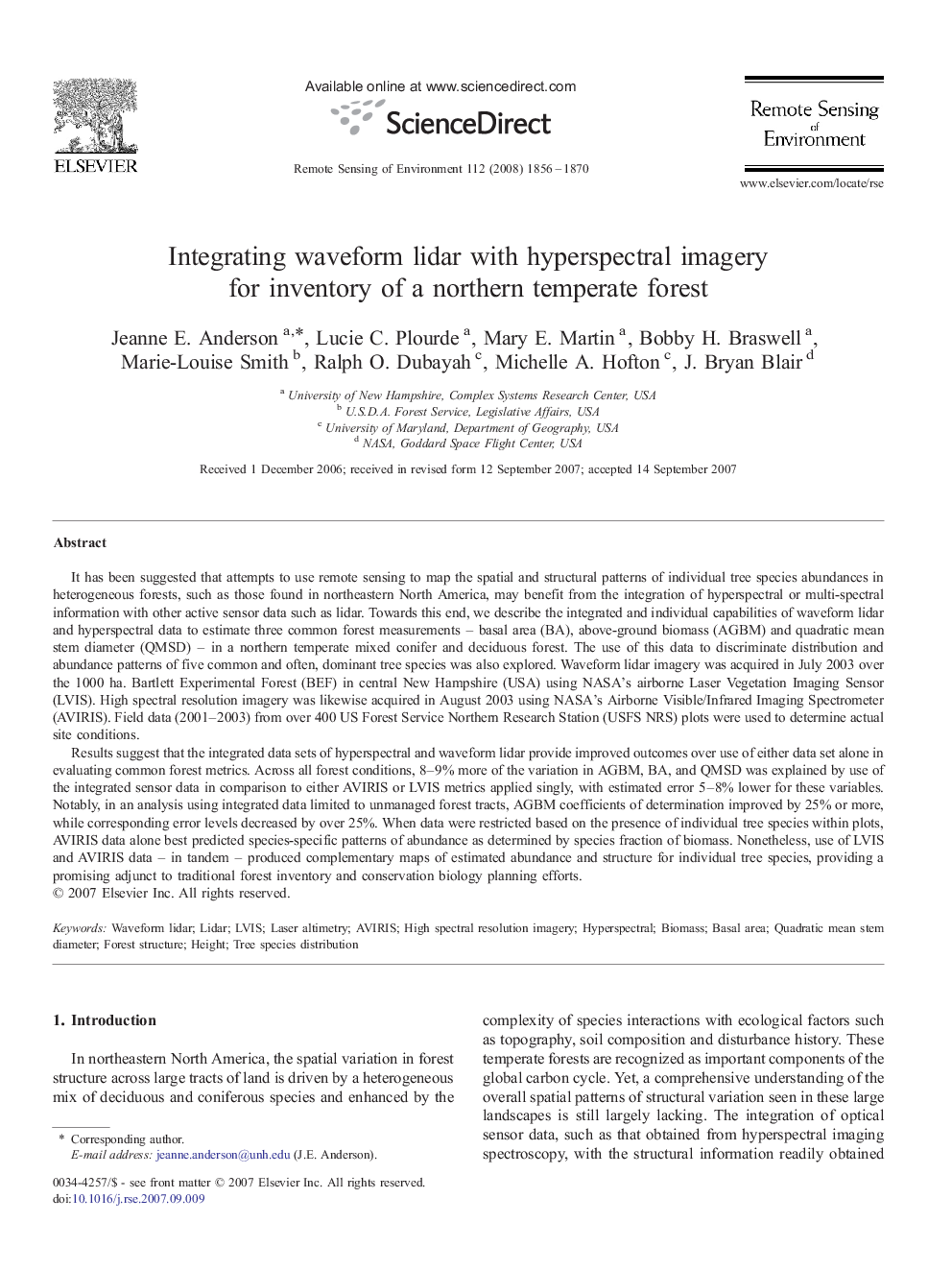| کد مقاله | کد نشریه | سال انتشار | مقاله انگلیسی | نسخه تمام متن |
|---|---|---|---|---|
| 4460405 | 1621330 | 2008 | 15 صفحه PDF | دانلود رایگان |

It has been suggested that attempts to use remote sensing to map the spatial and structural patterns of individual tree species abundances in heterogeneous forests, such as those found in northeastern North America, may benefit from the integration of hyperspectral or multi-spectral information with other active sensor data such as lidar. Towards this end, we describe the integrated and individual capabilities of waveform lidar and hyperspectral data to estimate three common forest measurements – basal area (BA), above-ground biomass (AGBM) and quadratic mean stem diameter (QMSD) – in a northern temperate mixed conifer and deciduous forest. The use of this data to discriminate distribution and abundance patterns of five common and often, dominant tree species was also explored. Waveform lidar imagery was acquired in July 2003 over the 1000 ha. Bartlett Experimental Forest (BEF) in central New Hampshire (USA) using NASA's airborne Laser Vegetation Imaging Sensor (LVIS). High spectral resolution imagery was likewise acquired in August 2003 using NASA's Airborne Visible/Infrared Imaging Spectrometer (AVIRIS). Field data (2001–2003) from over 400 US Forest Service Northern Research Station (USFS NRS) plots were used to determine actual site conditions.Results suggest that the integrated data sets of hyperspectral and waveform lidar provide improved outcomes over use of either data set alone in evaluating common forest metrics. Across all forest conditions, 8–9% more of the variation in AGBM, BA, and QMSD was explained by use of the integrated sensor data in comparison to either AVIRIS or LVIS metrics applied singly, with estimated error 5–8% lower for these variables. Notably, in an analysis using integrated data limited to unmanaged forest tracts, AGBM coefficients of determination improved by 25% or more, while corresponding error levels decreased by over 25%. When data were restricted based on the presence of individual tree species within plots, AVIRIS data alone best predicted species-specific patterns of abundance as determined by species fraction of biomass. Nonetheless, use of LVIS and AVIRIS data – in tandem – produced complementary maps of estimated abundance and structure for individual tree species, providing a promising adjunct to traditional forest inventory and conservation biology planning efforts.
Journal: Remote Sensing of Environment - Volume 112, Issue 4, 15 April 2008, Pages 1856–1870